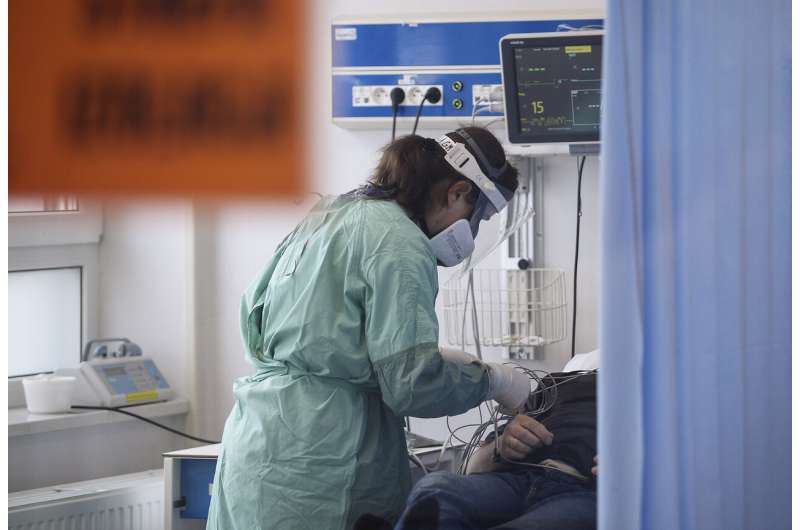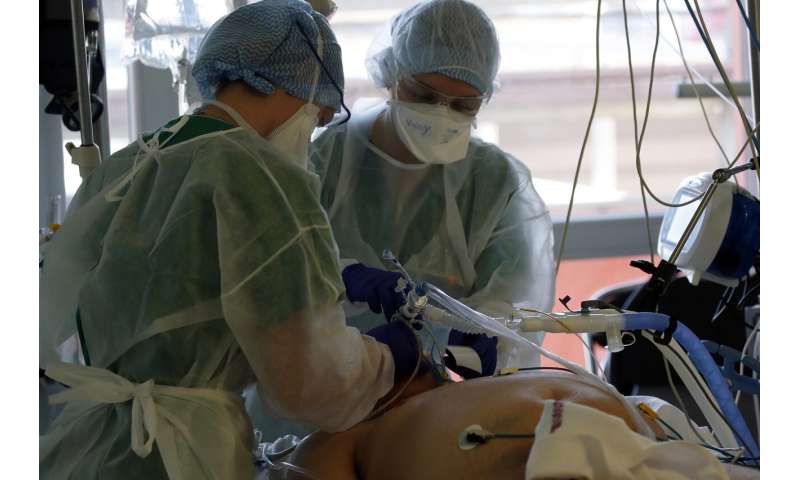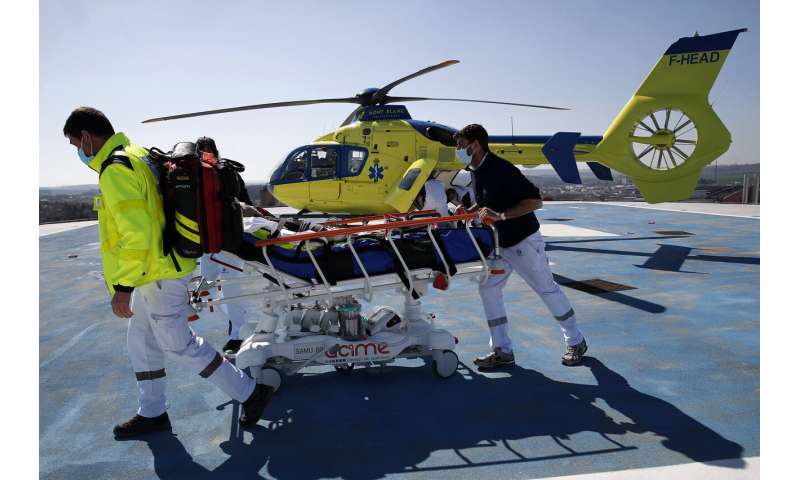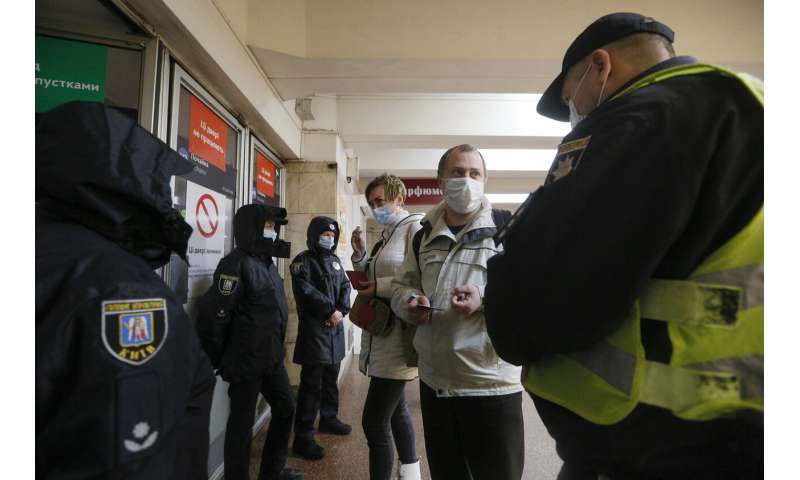European countries scramble to tamp down latest virus surge

European countries scrambled Monday to tamp down a surge in COVID-19 cases and ramp up vaccinations, hoping to spare hospitals from becoming overwhelmed by the pandemic’s latest deadly wave of infections.
The crush of coronavirus patients has been relentless for hospitals in Poland, where daily new infections hit records of over 35,000 on two recent days and the government ordered new restrictions to prevent large gatherings over the long Easter weekend. France’s health minister warned that the number of intensive care unit patients could match levels from a year ago.
But in a sign of the disparities from one country to the next, British Prime Minister Boris Johnson announced that barbers, gyms and outdoor bar and restaurant patios would be able to open next week after the country reported progress with vaccines and its recent lockdown. Meanwhile, the U.S. vaccination campaign kept accelerating, with 40 percent of the nation’s adult population receiving at least one dose.
On Sunday, coronavirus patients filled almost all of the 120 beds at the County Hospital of Bochnia, 40 kilometers (25 miles) east of the southern city of Krakow. One patient, 82-year-old Edward Szumanski, voiced concern that some people still refuse to see the virus that has killed over 2.8 million people worldwide as a threat. About 55,000 of those deaths have occurred in Poland.
“The disease is certainly there, and it is very serious. Those who have not been through it, those who do not have it in their family, may be deluding themselves, but the reality is different,” he said.
The more contagious and more aggressive virus variant identified in Britain is fueling much of the increase in Europe. Meanwhile, voters in many countries are angry at the European Union’s strategy but also at their own governments’ handling of the pandemic and the failure to prevent repeated spikes in infections.

France’s health minister, Olivier Veran, warned Monday that the number of COVID-19 patients in the country’s intensive care units might match the level of the first crisis a year ago. Speaking on TF1 television, he said the country could approach the ICU saturation levels of April 2020, when French ICUs held more than 7,000 virus patients, many of whom were in temporary facilities because demand far outstripped the country’s pre-pandemic ICU capacity.
Veran expressed hope that France’s new infections could peak this week thanks to new partial lockdown measures. After long resisting calls for a new lockdown, the French government closed schools and shuttered all non-essential stores nationwide and imposed travel restrictions for four weeks.
“We will manage,” Veran said.
The British government announced Monday that all adults and children will be able to have routine coronavirus tests twice a week as a way to stamp out new outbreaks. The tests are being introduced as Johnson announces the next steps in the country’s road map out of its three-month lockdown.
Britain has recorded almost 127,000 coronavirus deaths, the highest toll in Europe. But both infections and deaths have fallen sharply during the lockdown and since the start of a vaccination campaign that so far has given a first dose to more than 31 million people, or 6 in 10 adults.
Authorities in Ukraine’s capital, Kyiv, introduced tighter lockdown restrictions following a recent spike in virus cases. All schools in the city of 3 million people will be closed for the next two weeks, and only people with special passes will be allowed on public transport.

“The hospitals are almost full. The situation is difficult,” Kyiv Mayor Vitali Klitschko said.
Elsewhere, North Macedonia has delayed mass immunization amid vaccine shortages as its hospitals fill up following record new COVID-19 infections and deaths last week.
In Greece, which is struggling to emerge from a deep recession, most retail stores were allowed to reopen Monday despite an ongoing surge in COVID-19 infections. Lockdown measures have been in force since early November, although shops opened briefly around the Christmas season. The prolonged closures piled pressure on the economy.
Serbia also has eased measures against the coronavirus despite high numbers of infections and a slowdown in vaccinations. The government on Monday allowed bars and restaurants to serve guests outside at reduced capacity and with respect of social distancing rules.
In the U.S., a top public health official said young people are driving the latest uptick in COVID-19 cases, as the increasing rate of vaccination in older Americans prevents the most serious cases among seniors.
Dr. Rochelle Walensky, the director of the Centers for Disease Control and Prevention, cited the increasing spread of variants as well as a rise in youth sports and extracurricular activities as factors contributing to the steady increase in cases over the last four weeks.

But Walensky pointed to positive developments among seniors, who are the most vulnerable age group. Senior virus deaths have fallen to their lowest level since the early fall. More than 75% of those age 65 or older nationally have received at least one dose of a COVID-19 vaccine, and nearly 55% are fully vaccinated.
“What we’re seeing is both a decrease in emergency department visits as well as hospitalizations associated with that demographic,” she said Monday.
More than 23% of all adults in the U.S. are fully vaccinated, according to the CDC.
Source: Read Full Article
